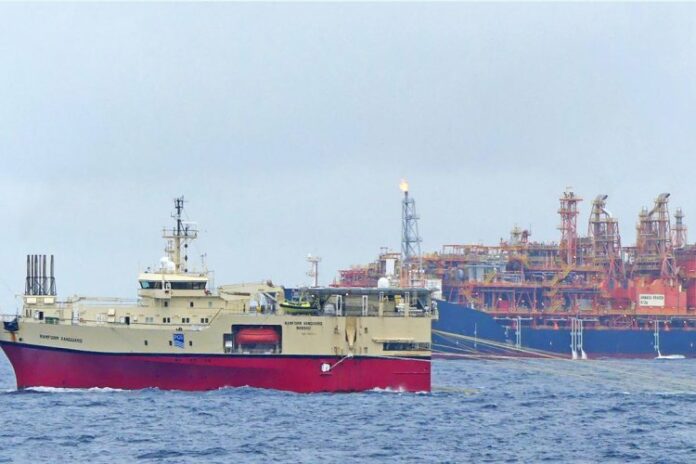Ramform Vanguard acquired the MultiClient survey, covering two new azimuths of 200 sq. km, in July 2021. First GeoStreamer X data will be available Q2 2022.
GeoStreamer X is an advanced high-density multi-azimuth solution that can be complementary to existing GeoStreamer coverage. It provides high-end nearfield exploration data to resolve imaging challenges.
The Kraken field lies in blocks 9/2b and 9/2c within the P1575 license. The reservoir is oil-bearing Paleocene Heimdal sands. Kraken North, Central, and South are produced using an FPSO. EnQuest is the operator and owns a 70.5% interest in the asset. The remaining stake is co-owned by Cairn Energy.
The new GeoStreamer X survey was prefunded by the P1575 group, with a clear goal of gaining a new understanding of the block, in order to fully evaluate the development potential of a new western area and nearfield opportunities (ILX).
Seismic acquisition around the Kraken FPSO was planned and executed in close cooperation between PGS and the operator. Mark Johnson Geophysicist and Data Lead at EnQuest commented:
“There was excellent communication with the Kraken FPSO throughout the execution of the project which ensures smooth permitting of the seismic vessel together with other simultaneous operations. I very much appreciate the coordinated effort of the PGS crew and the Reps aboard the FPSO and the seismic vessels for their overall planning efficiency and especially in the delivery of the close passes.”
Sónia Pereira, PGS Vice President Data Sales Europe, said:
“With GeoStreamer X data, both exploration and production teams achieve better illumination in their targeted areas, which enables much-improved fault definition and saves drill time with accurate targeted positioning. A key part of this project was to see any nearfield potential that could be explored and tied back to the Kraken field.”



